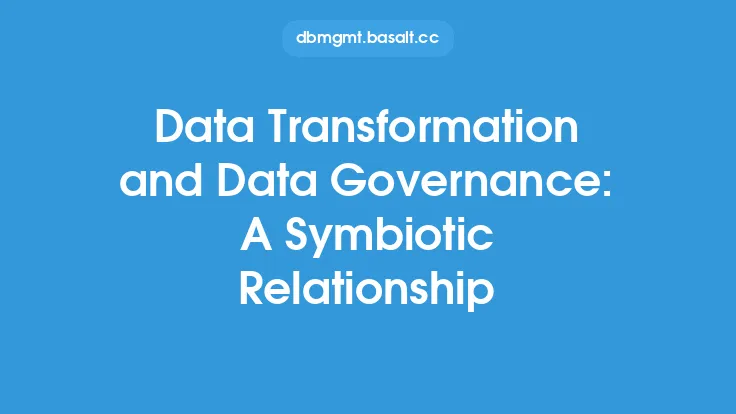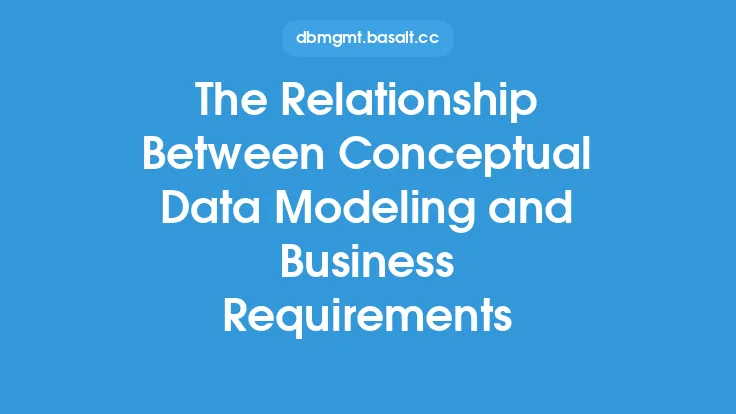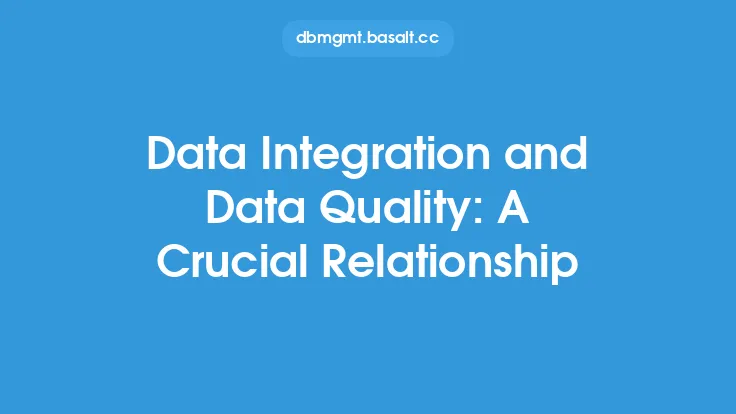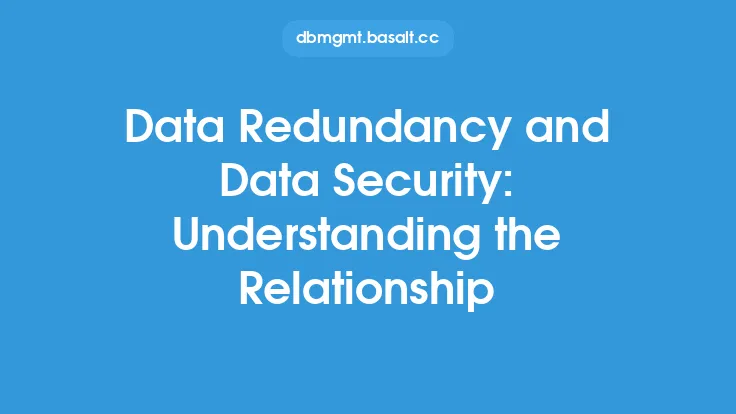Data cleansing is a critical process in data management that involves identifying, correcting, and transforming inaccurate, incomplete, or inconsistent data into a more reliable and usable format. However, data cleansing is not a standalone process, and its effectiveness is closely tied to data governance. Data governance refers to the overall management of an organization's data assets, including the policies, procedures, and standards that ensure data quality, security, and compliance. In this article, we will explore the relationship between data cleansing and data governance, and how they work together to ensure the accuracy, completeness, and consistency of an organization's data.
Introduction to Data Governance
Data governance is a holistic approach to managing an organization's data assets, and it encompasses a range of activities, including data quality management, data security, data compliance, and data architecture. Effective data governance ensures that an organization's data is accurate, complete, and consistent, and that it is properly secured and protected against unauthorized access or misuse. Data governance also involves establishing policies, procedures, and standards for data management, as well as defining roles and responsibilities for data stakeholders. In the context of data cleansing, data governance provides the framework and guidelines for identifying, correcting, and transforming inaccurate or inconsistent data.
The Role of Data Cleansing in Data Governance
Data cleansing plays a critical role in data governance, as it ensures that an organization's data is accurate, complete, and consistent. Data cleansing involves identifying and correcting errors, inconsistencies, and inaccuracies in data, as well as transforming data into a more usable and reliable format. This process is essential for ensuring the quality and integrity of an organization's data, and it is a key component of data governance. By cleansing data, organizations can improve the accuracy and reliability of their data, reduce errors and inconsistencies, and enhance decision-making and business outcomes. Data cleansing also helps to ensure compliance with regulatory requirements and industry standards, which is a critical aspect of data governance.
Data Quality Metrics and Data Cleansing
Data quality metrics are an essential component of data governance, and they provide a framework for measuring the accuracy, completeness, and consistency of an organization's data. Data quality metrics include measures such as data accuracy, data completeness, data consistency, and data timeliness, among others. Data cleansing plays a critical role in improving data quality metrics, as it involves identifying and correcting errors, inconsistencies, and inaccuracies in data. By using data quality metrics to measure the effectiveness of data cleansing, organizations can identify areas for improvement and optimize their data cleansing processes. This, in turn, helps to ensure that an organization's data is accurate, complete, and consistent, and that it meets the requirements of data governance.
Data Governance Frameworks and Data Cleansing
Data governance frameworks provide a structured approach to managing an organization's data assets, and they include components such as data quality management, data security, data compliance, and data architecture. Data cleansing is an essential component of data governance frameworks, as it ensures that an organization's data is accurate, complete, and consistent. Data governance frameworks also provide guidelines and standards for data cleansing, including procedures for identifying, correcting, and transforming inaccurate or inconsistent data. By using data governance frameworks to guide data cleansing, organizations can ensure that their data is properly managed and governed, and that it meets the requirements of regulatory bodies and industry standards.
Data Cleansing Tools and Technologies
Data cleansing tools and technologies are essential for effective data cleansing, and they include software applications, algorithms, and methodologies for identifying, correcting, and transforming inaccurate or inconsistent data. Data cleansing tools and technologies can be used to automate data cleansing processes, improve data quality, and reduce errors and inconsistencies. They can also be used to integrate data from multiple sources, transform data into a more usable format, and load data into a data warehouse or other repository. In the context of data governance, data cleansing tools and technologies provide the technical infrastructure for data cleansing, and they help to ensure that an organization's data is accurate, complete, and consistent.
Best Practices for Data Cleansing and Data Governance
Best practices for data cleansing and data governance include establishing clear policies and procedures for data management, defining roles and responsibilities for data stakeholders, and implementing data quality metrics to measure the effectiveness of data cleansing. They also include using data governance frameworks to guide data cleansing, implementing data cleansing tools and technologies to automate data cleansing processes, and providing training and support for data stakeholders. By following best practices for data cleansing and data governance, organizations can ensure that their data is accurate, complete, and consistent, and that it meets the requirements of regulatory bodies and industry standards.
Conclusion
In conclusion, data cleansing and data governance are closely intertwined, and they work together to ensure the accuracy, completeness, and consistency of an organization's data. Data cleansing is a critical process in data management that involves identifying, correcting, and transforming inaccurate, incomplete, or inconsistent data into a more reliable and usable format. Data governance provides the framework and guidelines for data cleansing, and it ensures that an organization's data is properly managed and governed. By understanding the relationship between data cleansing and data governance, organizations can improve the quality and integrity of their data, reduce errors and inconsistencies, and enhance decision-making and business outcomes.





